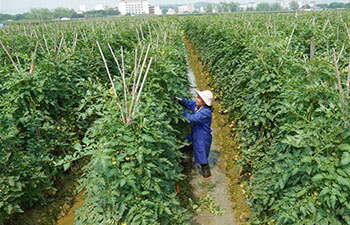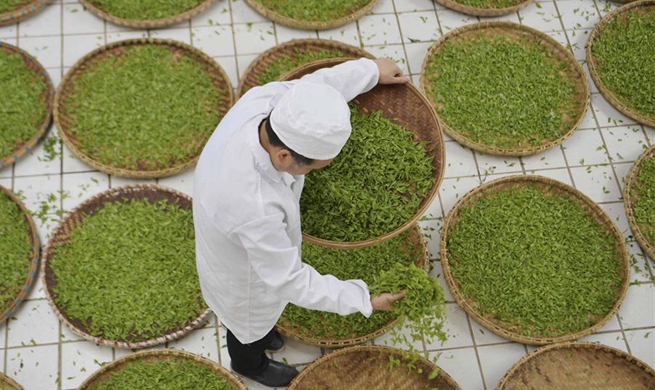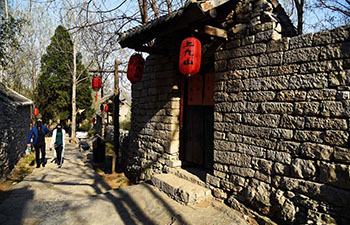BEIJING, April 7 (Xinhua) -- Chinese researchers have discovered a "death switch" in plant immunes system that can activate cell death to limit the spreading of microbial pathogens and provide plants with resistance.
Scientists say the discovery "will become textbook knowledge" for understanding plant immunity and offers new perspectives on developing next-generation disease-resistant crops that will be more environmentally-friendly with less pesticide use.
Plants have an innate immune system like animals. Plants can detect and respond to pathogens through a group of proteins called NLR. Although scientists have identified hundreds of NLR proteins, how these proteins function has been a matter of speculation for more than 20 years.
In the latest issue of the U.S. journal Science, researchers from China's Tsinghua University and Institute of Genetics and Developmental Biology, Chinese Academy of Sciences, reported in two research articles that the assembly of a pentangular wheel-like structure called "resistosome" plays a role in converting inactive NLR proteins into active complexes that leads to cell death and immune signaling in plants.
The two studies focused on a NLR protein called ZAR1 that can detect invading bacteria. The ZAR1 protein is found to be in a latent state in the absence of bacteria. Upon infection, ZAR1 is activated and undergoes huge conformational changes, forming a "ZAR1 resistosome" structure including 15 proteins.
The researchers also identified a funnel-like structure that tethers the resistosome to the plasma membrane.
In this way, it is like the resistosome sends a "self-destruction" order, triggering the infected cell to kill itself along with the invading pathogens, said Zhou Jianmin, a researcher at Institute of Genetics and Developmental Biology and corresponding author of the two studies, at a press conference.
Along with defining the mechanism, the Chinese researchers also created a structural model of the resistosome, paying the way for future related studies.
Chai Jijie, professor at Tsinghua University and corresponding author of the studies, said that in order to reduce the use of pesticide and make crop production more environmentally friendly, people needed to rely on plant abilities to fend off pathogens. Therefore, it is a must to understand the mechanism of plant immune systems.

















